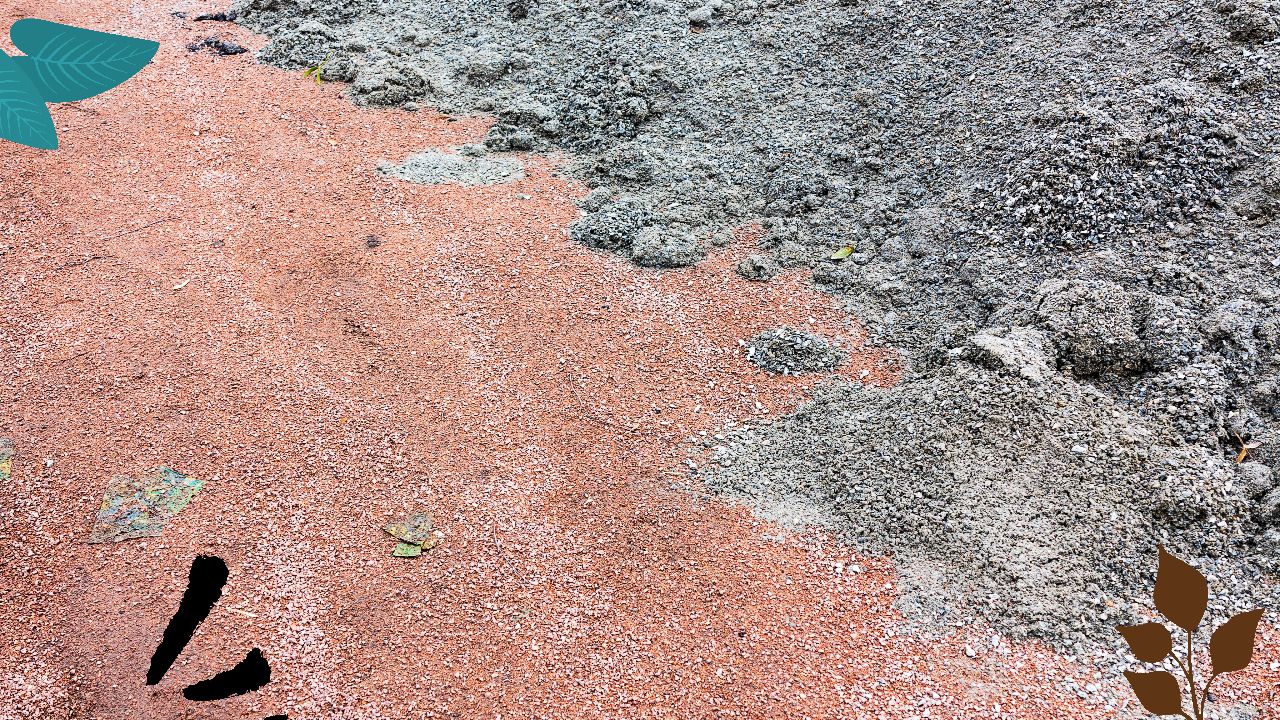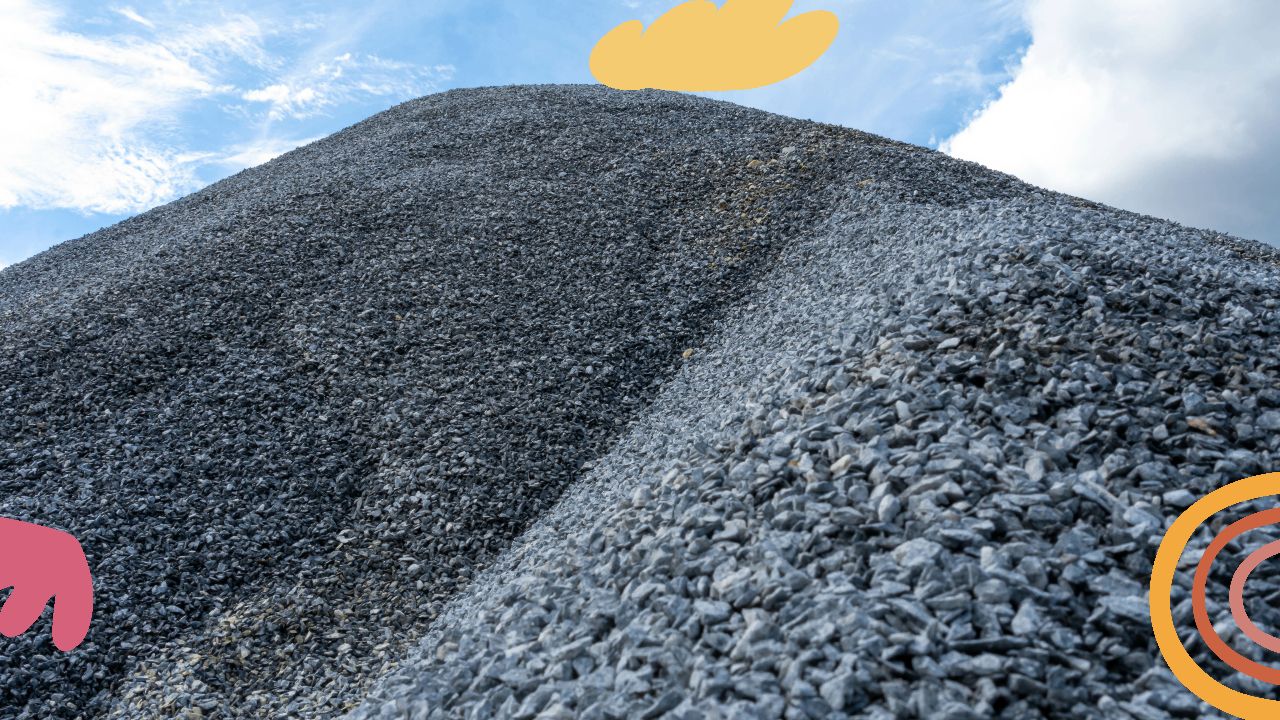Stone Dust: The Ultimate Guide to Using Quarry Dust in Your Backyard
By HeyHome • August 10, 2023

In the universe of landscaping and hardscaping, one material often gets overlooked, yet holds the key to many successful projects – stone dust. This byproduct of crushing stones is more than what it appears to be. Also known as quarry dust, stone dust is a highly versatile substance, prized for its multitude of uses. It serves as an important player in various outdoor projects, often acting as a trusted ally in creating stable, even surfaces.
So, what's the hype about stone dust? When it comes to laying stone pavers, providing a base for your garden path, or filling potholes, stone dust shows its true colors. It's a material that offers excellent drainage while providing a level surface. But the uses don't stop there. This processed gravel, this decomposed granite, this concrete sand alternative, has more to offer. It can be the perfect bedding material for your paving stones, providing an even and level surface. When crushing stone into crushed stones, stone dust is often considered waste material, but in reality, it's anything but.
If you're planning to undertake projects that need a stable base, or if you're thinking about hardscaping projects, knowing how to use and where to buy stone dust could save you significant effort and money. However, stone dust varies, and understanding its exact properties is crucial. This introductory guide is here to help you navigate through the world of stone dust, so you can make the most out of this often underestimated material.
Join us at HeyHome as we delve into the world of stone dust and discover its potential in transforming your backyard.
Join our newsletter
Stay on top of the latest in landscaping and lawn care with one valuable tip right in your inbox every Saturday morning.
Understanding Stone Dust: From Crushed Stone to Quarry Dust
Firstly, let's unravel the mystery of what stone dust is. In essence, it's a byproduct of the rock crushing process. When rocks are crushed, stone dust, also known as crushed stone, is produced. This fine, powdery material is often deemed as waste by excavation companies but, in the right hands, it is anything but.
An interesting tidbit is the different names stone dust goes by. It's often referred to as quarry dust and sometimes as crusher run. These terms are born out of the very process of its creation. When stones are crushed, usually at a quarry or stone yard, they produce this fine dust-like material. It’s also called quarry screenings, underscoring its origin from the quarry and its fine texture.
One common source of stone dust is decomposed granite. This happens when larger material, such as granite, undergoes weathering or erosion, breaking down into smaller pieces and eventually into dust. The result is a fine, non-porous material that serves as an excellent bedding layer for many hardscaping jobs.
The Uses of Stone Dust: More Than Just a Waste Material
For those unacquainted, stone dust's versatility might come as a surprise. From laying paving stones to creating an even and level surface for garden paths, stone dust has many uses.
The most common use of stone dust is as a base layer or setting bed for laying stone pavers. When you are laying stone pavers, you need to create a bedding layer that is even and level. Here, stone dust's fine texture plays a crucial role. It fills in the gaps between the larger base materials, ensuring an even surface that can properly support the pavers.
Beyond paving, stone dust is invaluable in the garden. Often considered waste material, it is a game-changer in the gardening world. When mixed with soil, stone dust can improve plant life by adding significant weight to the soil, preventing heavy rain from washing it away.
What's more, its non-porous nature allows it to function as an excellent drainage system for plant life, preventing waterlogged soil. In tropical climates, this characteristic of stone dust is especially beneficial.
If you're wondering about how much stone dust you'd need for your project, keep in mind that it varies with the size and depth of the area. As a rule of thumb, one cubic yard of stone dust covers about 100 square feet at 2 inches deep.
In many DIY stores, you'll find stone dust in various quantities. Some even sell stone dust online, offering convenience for smaller projects that don't require huge amounts.
The underappreciated stone dust is not just a filler material but a vital component in landscaping and construction. Its fine texture, coupled with its ability to create a flat surface and its excellent drainage properties, make it a prized possession for many a home gardener and landscaper.

To learn more about how you can use stone dust in your garden, take a look at our comprehensive gardening guides.
Quarry or Stone Yard: Where Does Stone Dust Come From?
Understanding the origin of stone dust leads us to the bustling activity of the quarry or stone yard. Here, crushing machines work tirelessly, transforming large rocks into the crushed stone used in many construction projects. In this process, a byproduct known as quarry screenings, or stone dust, is created.
Stone dust is essentially made from crushed stones, more specifically, it's the smaller, finer residue that's collected after the crushing process. The crushing machine grinds and processes the larger stones, and stone dust is the fine, powdery material that remains after the larger pieces have been filtered out.
Quarry dust and stone dust are often used interchangeably, but they are essentially the same material. It's worth noting that quarry dust varies in its exact composition and exact properties, even within the same quarry. This is due to variations in the rock type within the quarry.
Join our newsletter
Stay ahead of the curve in all things outdoor.
Get the inside scoop on the latest landscaping, lawn care, and fencing trends with 1 actionable tip every Saturday morning.
Despite these variations, stone dust typically exhibits certain properties that make it ideal for a range of uses. Its fine texture, ability to lay flat and create a level surface, and its suitability as a non-porous material are just some of these desirable characteristics.
The journey of stone dust from the quarry or stone yard to your backyard may involve various companies. From excavation companies that extract the raw stone, to the sellers that may even sell stone dust online, there's a whole supply chain at work.
From laying a stable base for paving stones to creating an even surface for your garden path, stone dust proves to be more than just a waste material. Curious to see how stone dust can enhance your home and garden? Dive into our in-depth articles on houseplants and more.
Buying Stone Dust: From Quarry to Online Store
Purchasing stone dust is a straightforward process, though the quantity and intended use may influence where and how you buy it. Whether it's for a small DIY project or a large-scale construction task, knowing how to buy stone dust can help you save money and time.
Stone dust can be purchased from a local stone yard or quarry, where you can buy it in bulk. These places usually sell stone dust in various quantities, typically measured in cubic yards or meters. Some may even allow you to fill your own containers, which can be cost-effective for smaller projects.
But if a trip to the quarry isn't feasible or if you need a specific type of stone dust that isn't readily available in your area, there are online options. Online stores like HeyHome offer a wide range of stone dust types, including crushed stone, decomposed granite, and regular stone dust, all available at the click of a button.

One of the main benefits of buying stone dust online is the convenience. Not only can you choose from different stone types, but you can also have it delivered straight to your door, a significant weight off your shoulders.
In addition, shopping online provides easy access to precise descriptions of the exact composition of each stone dust product. This makes it easier to choose the right stone dust for your project, whether it's setting a bed for paving stones or creating a garden path.
Discover more about stone dust and its applications in our comprehensive guides on trees and more.
The Stone Dust Driveway and Patio: How to Use Stone Dust for Your Hardscaping Projects
Hardscaping projects like driveways and patios require a stable base to ensure longevity and functionality. Stone dust is an excellent choice for this, providing a firm, even surface that's also permeable, preventing puddles from heavy rain seeping into your paved area.
Before laying stone dust, you must prepare the area. Remove any existing material and level the surface. An uneven surface may lead to instability over time. Once leveled, it's time to add the stone dust.
Firstly, spread the stone dust across the area to a depth of about 2-3 inches. The quantity you'll need depends on the project size, so it's good to know how much stone dust you'll need in cubic yards or meters. It's also critical to remember that stone dust varies in composition and properties, so always choose the right type for your project.

After laying the stone dust, it's time to compact it to create a level and even surface. A plate compactor is a useful tool for this task, ensuring the stone dust forms a stable base.
Next, lay your stone pavers, bedding them into the stone dust. Ensure they're level and fit snugly together to prevent any movement.
Finally, fill the gaps between the pavers with more stone dust. This not only locks the pavers in place but also provides excellent drainage, preventing water from pooling on the surface.
Stone dust is versatile and ideal for many hardscaping jobs, not just driveways and patios. You can use it to create a garden path, fill potholes, or even as a bedding layer for setting bed in tropical soils. Its fine texture and non-porous material make it an excellent choice for various applications.
For more tips on using stone dust for your projects, visit our ultimate guide to indoor plant care, where we explore its use in gardening and beyond.
Conclusion: Stone Dust - An Unsung Hero in Landscaping
As we've explored, stone dust, often considered a mere byproduct of crushed stones or quarry screenings, is a truly versatile and valuable material. Its unique properties make it a go-to choice for many hardscaping projects, from creating a solid, even base for paving stones, to being used as a filler material to rectify uneven surfaces.
In gardens, stone dust can help create a visually pleasing, low-maintenance path. Stone dust is more than just a waste material—it's a hidden hero in landscaping. Not only can it save you money by being a cost-effective solution, but its usage also helps in waste management, turning what was once discarded into something useful.
Whether you're buying stone dust for your backyard or selling it online, platforms like HeyHome are here to make the process seamless. We invite you to continue exploring the many possibilities with stone dust, and see how it can transform your outdoor spaces.
Discover more about stone dust and other landscaping ideas on HeyHome. Be it a garden path, a patio, or a driveway, let stone dust pave the way to your ideal outdoor space.
Join our newsletter
Stay ahead of the curve in all things outdoor.
Get the inside scoop on the latest landscaping, lawn care, and fencing trends with 1 actionable tip every Saturday morning.